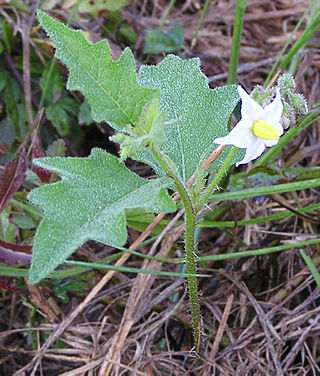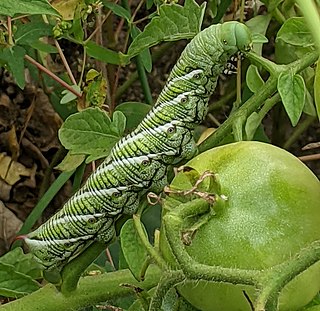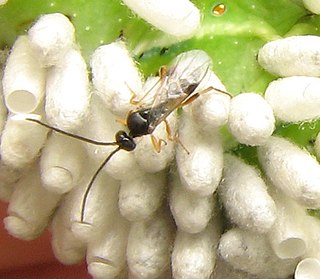A major contributor to this article appears to have a close connection with its subject.(September 2023) |

Anton George Windfelder is a German zoologist and immunologist whose primary research interests include functional imaging of insects. [1]
A major contributor to this article appears to have a close connection with its subject.(September 2023) |

Anton George Windfelder is a German zoologist and immunologist whose primary research interests include functional imaging of insects. [1]
Windfelder became known after he established the caterpillars of the tobacco hornworm (Manduca sexta) as an alternative animal model for medical research. [2] [3] [4] [5] [6] [7] [8] [ excessive citations ] His work has received international attention and helps to reduce the number of mammals in medical research according to the 3R principle. [9] [10] [11] [12] [13] [14] [15] [16] [ excessive citations ]
Windfelder was born in Berlin, where he also graduated from high school. After this, Windfelder studied biology at the Justus-Liebig University in Giessen, with a major in zoology, and became scientifically active early on during his studies. [17] After graduation, Windfelder became a research associate at the Institute of General Zoology and Developmental Biology in the research group for cellular recognition and defense processes led by Tina Trenczek. [18]
Windfelder received his doctorate in 2021 on the topic "High-throughput screening of insect larvae as a replacement for mammalian models of gut inflammation" from Tina Trenczek and Ulrich Flögel. [19] [20] The doctorate was awarded with the highest grade summa cum laude, and Windfelder was awarded the Dr.-Herbert-Stolzenberg-Prize for outstanding achievements in biology in 2023 for his work. [21] [22] [23] After receiving his doctorate, Windfelder moved to the Fraunhofer Institute for Molecular Biology and Applied Ecology to work with Andreas Vilcinskas. He is also employed at the University Hospital Giessen in Experimental Radiology. [24] [25] Windfelder is also involved in university teaching and advocates the use of new didactic methods, such as virtual reality, in medical education. [26] [11] [5]
During his time in Giessen, Windfelder met his wife. Windfelder is married and has two children. [27]

Windfelder's scientific focus is on the functional imaging of insects. [3] [28] [29] He exploits medical imaging methods such as computed tomography, magnetic resonance imaging, positron emission tomography, or photoacoustic imaging to study physiological and immunological processes in insects. [3] He was the first scientist to use 18F-fluorodeoxyglucose positron emission tomography (FDG-PET) to show pathological glucose metabolism in tobacco hornworms with gut inflammation [3] [30] His work shows that the previously mentioned methods can also be used in insects to detect inflammation in analogy to humans. [3] [31] [32] [33] [34]
This allows insects to be better protected from harmful influences such as pesticides, as the adverse effects of these substances can now be detected more easily. On the other hand, insects can be used as alternative animal models in biomedical research. [3] [35] Due to the close evolutionary conservation of the innate immune system and the anatomy of the intestinal epithelium between insects and mammals, insects represent excellent models for studying gut inflammation. [34] [36] [37] [38] For this purpose, Windfelder and his team established the larvae of the tobacco hornworm (Manduca sexta) using the above methods as an alternative animal model for chronic inflammatory bowel diseases such as Crohn's disease and ulcerative colitis. [3] [33] [34] In addition, new promising contrast agents for radiology or tracers for nuclear medicine can first be tested on insects instead of mice or rats, as was previously the case. [29] [34] [39] Since Windfelder's research helps reduce the number of experiments involving small mammals, his research also significantly contributes to animal welfare (3Rs principle). [3] [40]

Caterpillars are the larval stage of members of the order Lepidoptera.

Nicotiana is a genus of herbaceous plants and shrubs in the family Solanaceae, that is indigenous to the Americas, Australia, Southwestern Africa and the South Pacific. Various Nicotiana species, commonly referred to as tobacco plants, are cultivated as ornamental garden plants. N. tabacum is grown worldwide for the cultivation of tobacco leaves used for manufacturing and producing tobacco products, including cigars, cigarillos, cigarettes, chewing tobacco, dipping tobacco, snuff, and snus.
The Fraunhofer Society is a German publicly-owned research organization with 76 institutes spread throughout Germany, each focusing on different fields of applied science. With some 30,800 employees, mainly scientists and engineers, and with an annual research budget of about €3.0 billion, it is the biggest organization for applied research and development services in Europe. It is named after Joseph von Fraunhofer who, as a scientist, an engineer, and an entrepreneur, is said to have superbly exemplified the goals of the society.

The Sphingidae are a family of moths commonly called sphinx moths, also colloquially known as hawk moths, with many of their caterpillars known as hornworms. It includes about 1,450 species. It is best represented in the tropics, but species are found in every region. They are moderate to large in size and are distinguished among moths for their agile and sustained flying ability, similar enough to that of hummingbirds as to be reliably mistaken for them. Their narrow wings and streamlined abdomens are adaptations for rapid flight. The family was named by French zoologist Pierre André Latreille in 1802.

Solanum carolinense, the Carolina horsenettle, is not a true nettle, but a member of the Solanaceae, or nightshade family. It is a perennial herbaceous plant, native to the southeastern United States, though its range has expanded throughout much of temperate North America. The plant is an invasive in parts of Europe, Asia, Africa and Australia. The stem and undersides of larger leaf veins are covered with prickles.

Manduca sexta is a moth of the family Sphingidae present through much of the Americas. The species was first described by Carl Linnaeus in his 1763 Centuria Insectorum.

Waxworms are the caterpillar larvae of wax moths, which belong to the family Pyralidae. Two closely related species are commercially bred – the lesser wax moth and the greater wax moth. They belong to the tribe Galleriini in the snout moth subfamily Galleriinae. Another species whose larvae share that name is the Indianmeal moth, though this species is not available commercially.

Manduca quinquemaculata, the five-spotted hawkmoth, is a brown and gray hawk moth of the family Sphingidae. The caterpillar, often referred to as the tomato hornworm, can be a major pest in gardens; they get their name from a dark projection on their posterior end and their use of tomatoes as host plants. Tomato hornworms are closely related to the tobacco hornworm Manduca sexta. This confusion arises because caterpillars of both species have similar morphologies and feed on the foliage of various plants from the family Solanaceae, so either species can be found on tobacco or tomato leaves. Because of this, the plant on which the caterpillar is found does not indicate its species.

The Braconidae are a family of parasitoid wasps. After the closely related Ichneumonidae, braconids make up the second-largest family in the order Hymenoptera, with about 17,000 recognized species and many thousands more undescribed. One analysis estimated a total between 30,000 and 50,000, and another provided a narrower estimate between 42,000 and 43,000 species.

Leucyl aminopeptidases are enzymes that preferentially catalyze the hydrolysis of leucine residues at the N-terminus of peptides and proteins. Other N-terminal residues can also be cleaved, however. LAPs have been found across superkingdoms. Identified LAPs include human LAP, bovine lens LAP, porcine LAP, Escherichia coli LAP, and the solanaceous-specific acidic LAP (LAP-A) in tomato.

Cotesia congregata is a parasitoid wasp of the genus Cotesia. The genus is particularly noted for its use of polydnaviruses. Parasitoids are distinct from true parasites in that a parasitoid will ultimately kill its host or otherwise sterilize it.

Nicotiana attenuata is a species of wild tobacco known by the common name coyote tobacco. It is native to western North America from British Columbia to Texas and northern Mexico, where it grows in many types of habitat. It is a glandular and sparsely hairy annual herb exceeding a meter in maximum height. The leaf blades may be 10 centimetres (4 in) long, the lower ones oval and the upper narrower in shape, and are borne on petioles. The inflorescence bears several flowers with pinkish or greenish white tubular throats 2 to 3 centimetres long, their bases enclosed in pointed sepals. The flower face has five mostly white lobes. The fruit is a capsule about 1 centimetre long.
Bacillus thuringiensis subsp. kurstaki (Btk) is a group of bacteria used as biological control agents against lepidopterans. Btk, along with other B. thuringiensis products, is one of the most widely used biological pesticides due to its high specificity; it is effective against lepidopterans, and it has little to no effect on nontarget species. During sporulation, Btk produces a crystal protein that is lethal to lepidopteran larvae. Once ingested by the insect, the dissolution of the crystal allows the protoxin to be released. The toxin is then activated by the insect gut juice, and it begins to break down the gut.
Lynn Moorhead Riddiford is an American entomologist and developmental biologist. She was the first female faculty member in the Harvard Biology Department where she served as an assistant and associate professor. She is an emeritus professor at the University of Washington. In 1997, she was the first awardee of the Recognition Award in Insect Physiology, Biochemistry, and Toxicology from the Entomological Society of America. Riddiford studies the endocrinology of insects, specifically the tobacco hornworm.
James "Jim" William Truman is an American chronobiologist known for his seminal research on circadian rhythms in silkmoth (Saturniidae) eclosion, particularly the restoration of rhythm and phase following brain transplantation. He is a professor emeritus at the University of Washington and a former senior fellow at Howard Hughes Medical Institution Janelia Research Campus.

Nancy Elizabeth Beckage was an American entomologist known for her work on host–parasitoid interactions. She held professorships in entomology and in cell biology and neuroscience at the University of California, Riverside.
Michael R. Kanost is a University Distinguished Professor in the Department of Biochemistry and Molecular Biophysics at Kansas State University.

Eclosion assays are experimental procedures used to study the process of eclosion in insects, particularly in the model organism drosophila. Eclosion is the process in which an adult insect emerges from its pupal case, or a larval insect hatches from its egg. In holometabolous insects, the circadian clock regulates the timing of adult emergence. The daily rhythm of adult emergence in these insects was among the first circadian rhythms to be investigated. The circadian clock in these insects enforces a daily pattern of emergence by permitting or triggering eclosion during specific time frames and preventing emergence during other periods.
Elizabeth A. Bernays was an Australian entomologist who was a Regents Professor at the University of Arizona. She was known for studies of physiological, behavioural, and ecological interactions between plants, herbivorous insects and their predators. Bernays worked on the feeding behaviour of a variety of insects including aphids, grasshoppers, and hawkmoths. She was known for championing the idea that predation drove many insects to specialise on a few species of hostplants, rather than specialisation being solely the outcome of a chemical arms race between plant and insect herbivores.
This article needs additional or more specific categories .(September 2023) |